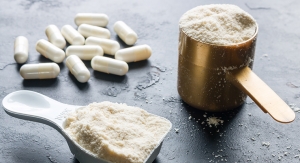By Joerg Gruenwald, analyze & realize ag09.10.18
On Jan. 1, 2018, the new Novel Foods Regulation ((EU) 2015/2283) went into effect. Its aim is to improve the conditions for food business operators looking to bring new and innovative foods to the EU market without sacrificing the high level of food safety for European consumers that the old regulation afforded. The new regulation replaces the former system of individual national authorizations with a simpler and faster centralized EU procedure.
On Dec. 20, 2017, the long-awaited core element of the new regulation, the Union List of Novel Foods, was agreed upon and laid down in Implementing Regulation (EU) 2017/2470. From that date on, all authorizations realized under the previous regulation (EC) 258/97 will be generic. The Union List provides the specifications and conditions of use for these generic foods and food ingredients. Food business operators using these ingredients can market their products directly, provided that they meet the specifications in the Union List, and that the authorized conditions of use are observed.
The most recent version of the Union list, currently dated Dec. 20, 2017, is available at https://bit.ly/2MtIaWg. This list will be updated regularly. Whether and how these updates will also include corrections of mistakes and inconsistencies remains to be seen.
Analysis & Industry Reaction
The transition from product specific and business operator specific authorizations to generic ones comes as a big relief for many in the food business. However, manufacturers of the more innovative products are bound to be disappointed. One issue is that protection for proprietary data as per articles 26 and 27 of (EU) 2015/2283 does not apply to those applications that only recently got their Novel Foods authorized while the former regulation was still in effect. Applications that were not finalized under the old regulation will be further processed pursuant to (EU) 2015/2283, but may now have the opportunity to request data protection as per these articles.
All in all, industry verdict on the new regulation has been positive, with about 20% of professionals surveyed by Vitafoods Europe saying they expect the new rules to have a positive impact, compared to only 10% who think the impact will be negative; 17% of respondents said they are now more likely to undergo a novel food authorization route for their products, while 12% said they were less likely to do so.
A big advantage of the new regulation is the time-saving factor afforded by the new, centralized procedure. As per the old regulation, the average time to get a novel food approval was 3.5 years, topping out at 5 or 6 years. Industry insiders are hoping the better-defined deadlines of the new process will result in faster approvals. However, only time will tell whether this new, streamlined procedure will hold that promise in practice.
However, as mentioned, some food business operators fear there may be adverse implications for some intellectual property portfolios. Analyze & realize’s expert Dr. Steffi Dudek pointed out, “The new regulations certainly represent progress for traditional foods from third countries or for relatively simple products—exotic berries for example. But manufacturers of innovative synthetic or fermented ingredients who received an authorization under the old regulation after investing heavily in research will be disappointed that their proprietary data is not respected in the way they had hoped. I’m also concerned that some products that should be subject to their own authorizations might now enter the EU market under a generic authorization. It remains to be seen how companies will take the responsibility to assess the status of their products.”
On Jan. 5, the Commission launched an electronic submission form that is to be used for all types of future novel food applications. Applicants need to register on the EU login website prior to first use of this submission form. The e-submission format not only makes the application easier, it also allows applicants to follow up on their applications from submission until outcome, which improves transparency of the entire submission process. To support applicants in this application procedure, there is a user guide available at https://bit.ly/2OE7BSF.
In conclusion, during a time when innovation is becoming more difficult due to certain regulatory restrictions such as in the health claim arena, the majority of food business operators will welcome this simplified, centralized procedure for authorizing innovative ingredients. It remains to be seen how much the market will actually benefit from the new regulation.
Joerg Gruenwald
analyze & realize ag
Dr. Joerg Gruenwald is co-founder of analyze & realize GmbH, a specialized business consulting company and CRO in the fields of nutraceuticals, dietary supplements, herbals and functional food, and author of the PDR for Herbal Medicines. He can be reached at analyze & realize GmbH, Waldseeweg 6, 13467 Berlin, Germany; +49-30-40008100; E-mail: jgruenwald@a-r.com; Website: www.analyze-realize.com.
On Dec. 20, 2017, the long-awaited core element of the new regulation, the Union List of Novel Foods, was agreed upon and laid down in Implementing Regulation (EU) 2017/2470. From that date on, all authorizations realized under the previous regulation (EC) 258/97 will be generic. The Union List provides the specifications and conditions of use for these generic foods and food ingredients. Food business operators using these ingredients can market their products directly, provided that they meet the specifications in the Union List, and that the authorized conditions of use are observed.
The most recent version of the Union list, currently dated Dec. 20, 2017, is available at https://bit.ly/2MtIaWg. This list will be updated regularly. Whether and how these updates will also include corrections of mistakes and inconsistencies remains to be seen.
Analysis & Industry Reaction
The transition from product specific and business operator specific authorizations to generic ones comes as a big relief for many in the food business. However, manufacturers of the more innovative products are bound to be disappointed. One issue is that protection for proprietary data as per articles 26 and 27 of (EU) 2015/2283 does not apply to those applications that only recently got their Novel Foods authorized while the former regulation was still in effect. Applications that were not finalized under the old regulation will be further processed pursuant to (EU) 2015/2283, but may now have the opportunity to request data protection as per these articles.
All in all, industry verdict on the new regulation has been positive, with about 20% of professionals surveyed by Vitafoods Europe saying they expect the new rules to have a positive impact, compared to only 10% who think the impact will be negative; 17% of respondents said they are now more likely to undergo a novel food authorization route for their products, while 12% said they were less likely to do so.
A big advantage of the new regulation is the time-saving factor afforded by the new, centralized procedure. As per the old regulation, the average time to get a novel food approval was 3.5 years, topping out at 5 or 6 years. Industry insiders are hoping the better-defined deadlines of the new process will result in faster approvals. However, only time will tell whether this new, streamlined procedure will hold that promise in practice.
However, as mentioned, some food business operators fear there may be adverse implications for some intellectual property portfolios. Analyze & realize’s expert Dr. Steffi Dudek pointed out, “The new regulations certainly represent progress for traditional foods from third countries or for relatively simple products—exotic berries for example. But manufacturers of innovative synthetic or fermented ingredients who received an authorization under the old regulation after investing heavily in research will be disappointed that their proprietary data is not respected in the way they had hoped. I’m also concerned that some products that should be subject to their own authorizations might now enter the EU market under a generic authorization. It remains to be seen how companies will take the responsibility to assess the status of their products.”
On Jan. 5, the Commission launched an electronic submission form that is to be used for all types of future novel food applications. Applicants need to register on the EU login website prior to first use of this submission form. The e-submission format not only makes the application easier, it also allows applicants to follow up on their applications from submission until outcome, which improves transparency of the entire submission process. To support applicants in this application procedure, there is a user guide available at https://bit.ly/2OE7BSF.
In conclusion, during a time when innovation is becoming more difficult due to certain regulatory restrictions such as in the health claim arena, the majority of food business operators will welcome this simplified, centralized procedure for authorizing innovative ingredients. It remains to be seen how much the market will actually benefit from the new regulation.
Joerg Gruenwald
analyze & realize ag
Dr. Joerg Gruenwald is co-founder of analyze & realize GmbH, a specialized business consulting company and CRO in the fields of nutraceuticals, dietary supplements, herbals and functional food, and author of the PDR for Herbal Medicines. He can be reached at analyze & realize GmbH, Waldseeweg 6, 13467 Berlin, Germany; +49-30-40008100; E-mail: jgruenwald@a-r.com; Website: www.analyze-realize.com.




























